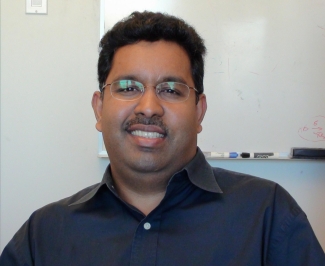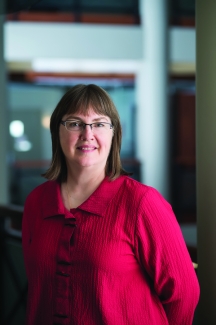In the news: UBC research brings us one step closer to universal blood
Wednesday, August 29, 2018 Dr. Geraldine Walsh
Exciting research from the University of British Columbia could make it easier to match blood to patients, by turning all blood into type O, the universal donor. This work was just presented at the American Chemical Society National Meeting in Boston, and has created quite a buzz. I chatted to our Chief Scientist, Dr. Dana Devine, and Dr. Jayachandran Kizhakkedathu to learn more.
Led by Dr. Stephen Withers, a professor in the departments of chemistry and biochemistry at UBC, researchers have discovered an enzyme that can turn type A, B or AB blood into type O.
So, what is this approach about?
The antigens that determine your blood type are sugar molecules. These act like flags on the surface of red blood cells: group A blood has A antigens, group B has B antigens, and group AB has both. Type O blood has no flags, so the red cells cannot be recognized by any immune system and can be safely transfused to patients with other blood types. Dr. Withers and his team have found an enzyme that can chop the A and B flags off the red blood cell surface, converting all red blood cells to type O.
The team has been exploring this approach for several years. In 2015, with funding from the Canadian Blood Services Centre for Innovation and other partners, the researchers used a bioengineering approach to improve upon an enzyme that can cleave red blood cell antigens. While this work was promising, they understood quickly that they would need a more efficient enzyme.
Dr. Kizhakkedathu, based at the UBC Centre for Blood Research, is on the team conducting the research. I asked Dr. Kizhakkedathu how this new study expands upon their 2015 work.

He explained:
“In the previous study we took a known enzyme that worked on one of the A [antigen] sub-types, but not on others. Type A blood has a very complex sugar structure and 4-6 different sub-types are known. We used the technique of directed evolution to increase its activity against another sub-type almost 200-fold. However, it became apparent that using this approach to convert all A sub-types could prove very challenging. We decided to take a different approach and look to see whether Mother Nature had perhaps already made good enzymes”.
So where would Mother Nature hide these enzymes? Knowing that the gut is lined with glycoproteins that have sugars, including A and B antigens, the researchers postulated that some gut bacteria may have developed enzymes efficient at cleaving A and B antigens to derive energy from these sugars. They used an approach called “metagenomics” to survey possible enzymes in gut bacteria, and found several good candidates. They uncovered a new class of enzyme that can cleave A antigens 30 times more efficiently than the previous best candidate.
As Dr. Kizhakkedathu notes, “This new enzyme system is very powerful and works at very low concentrations (in low micrograms/mL) to convert A-type blood to O-type blood, and is better than anything available today.”
What does this mean for blood operators and suppliers?
Being able to convert any red blood cells into type O could help inventory pressures. As Dr. Devine explains, “One of the main challenges with maintaining an adequate blood supply in developed countries is that the [clinical] use of group O is not in proportion to the incidence of that blood group in the population. This is because in emergency/trauma settings, we often do not know the blood type of the patient and there is no time to figure that out before transfusing blood components. So, we use group O red blood cells (and group AB plasma). Although all blood services reach out to their O donors frequently, group O, especially group O-negative blood, is always the smallest proportion of our inventory.”

Dr. Devine calls this new research a “game-changer”, “This work is very promising. About 10 years ago, our industry had gotten very close to having a process that could convert A, B or AB blood types to group O. It was being commercialized by a company in the US, but at the end of the day, the main problem was the excessive cost of the enzymes required to remove the A and B sugars. The work of Dr. Withers and colleagues may have solved this problem. He has figured out a way to make these enzymes more efficient and so much less is needed.”
Will Canadian Blood Services provide only type O blood in the future?
Dr. Devine thinks not:
“This technology permits us to create a ‘work around’ for the disproportionate demand for type O red blood cells, by turning the excess inventory of other blood groups (esp. type AB) into type O. While it is probably unnecessary to consider modifying all non-O red blood cell units, this technology will be important during a seasonal shortage of group O (e.g. summers in Canada), an anticipated disaster planning (e.g. hurricanes in the Caribbean, or troop deployment to dangerous parts of the world), or stocks for pre-hospital transfusion (e.g. blood carried on Life Flight ambulance programs).“
Dr. Devine was also keen to point out that this would not lessen our need for blood donors. While it may help ease type O shortages, the same volume of blood donors and donations will be required.
So, what’s next for the research team?
Dr. Kizhakkedathu explains:
“The next steps are all about safety to make sure that we have not made inadvertent changes to the red blood cells through this enzymatic modification process. In addition, we are performing detailed serology and cross-matching experiments using diverse A donors, and donor serum from different blood groups.”
Dr. Devine agrees. “It will be important to demonstrate that the blood product is safe for patients. We will also need to better understand the manufacturing process, and how well the blood stores after the enzyme treatment.”
Much of this future work will take place in collaboration with Canadian Blood Services. The researchers will be working with the Centre for Innovation development facility in Vancouver to test blood from diverse donors and collect large volumes of blood to test the efficiency of their enzyme system. Detailed serological studies will also be conducted with Dr. Andrew Shih at Vancouver General Hospital.
Is this the breakthrough needed to make engineered universal blood a reality?
Only time will tell, but right now, the future of universal blood is bright!
This exciting development is the latest in a long quest to “make” universal blood. Apart from enzymatic conversion, other approaches are also being investigated. Scientists at the Centre for Innovation are masking the antigens on red blood cells so that the immune system cannot recognize them. Scientists in the UK and elsewhere are working to make synthetic red blood cells a reality. These synthetic red blood cells could be engineered as universal blood or even tailored to a specific patient’s needs. While there has been some exciting progress, the economic and logistic feasibility of synthetic red blood cells remains unclear.
Learn more
- Gut bug enzyme turns blood into type-O BBC News | August 21, 2018
- Gut bacteria provide key to making universal blood (video) American Chemical Society | August 21, 2018
- Scientists Find Enzyme That Could Help Create Universal Blood Type PBS - NOVA | August 25, 2018
- Blood for all: Making universal blood through enzymes UBC | August 21, 2018
- UBC researchers have found a way to convert any blood type to the universal O CBC - Quirks and Quarks | August 25, 2018
Canadian Blood Services – Driving world-class innovation
Through discovery, development and applied research, Canadian Blood Services drives world-class innovation in blood transfusion, cellular therapy and transplantation—bringing clarity and insight to an increasingly complex healthcare future. Our dedicated research team and extended network of partners engage in exploratory and applied research to create new knowledge, inform and enhance best practices, contribute to the development of new services and technologies, and build capacity through training and collaboration. Find out more about our research impact.
The opinions reflected in this post are those of the author and do not necessarily reflect the opinions of Canadian Blood Services nor do they reflect the views of Health Canada or any other funding agency.
Related blog posts
When a person is in dire need of blood, a blood transfusion seems like a simple solution. A donor donates blood, and eventually a patient in need receives it. Yet, in reality this life-saving medical procedure, as safe as it may be, is not that simple.
